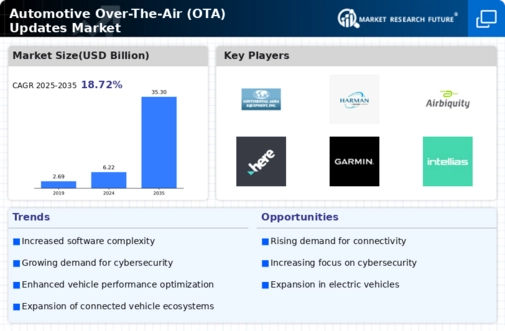Market Analysis
In-depth Analysis of Automotive Over The Air Updates Market Industry Landscape
In the ever-evolving landscape of automotive technology, Over-the-Air (OTA) updates have become a cornerstone for enhancing vehicle functionalities. However, the convenience they offer comes with inherent cybersecurity challenges. To mitigate the risks of cyberattacks, providers of automobile OTA updates are increasingly focusing on delivering secured, end-to-end encrypted solutions. Furthermore, the development of OTA technology and security standards, such as ISO 26262, is pivotal in fostering the adoption of OTA update solutions while concurrently enhancing the quality and comprehensiveness of security features from software suppliers. Cybersecurity in the realm of automobile OTA updates is a critical concern. As vehicles become more connected and reliant on software, the potential vulnerabilities for cyber threats increase. Providers of OTA updates are responding to this challenge by incorporating robust security measures to safeguard against cyberattacks. End-to-end encryption is a fundamental aspect of these solutions, ensuring the strong integrity, confidentiality, and authenticity of the OTA updates. The security of OTA updates extends beyond the transmission of data; it encompasses the protection of Original Equipment Manufacturer (OEM) Intellectual Property (IP) and the data being processed during updates. Securing the entire ecosystem is paramount to prevent unauthorized access and tampering. Providers must employ sophisticated encryption techniques to shield the sensitive information exchanged during the update process. One crucial element in enhancing security is the integration of OTA updates with metadata security. This integration serves as an additional layer of protection, preventing attackers from installing malicious firmware in the vehicle. By securing both the content and the accompanying metadata, providers ensure a comprehensive approach to thwart potential cyber threats. Blockchain-based techniques emerge as a promising solution to address security issues in OTA updates. The decentralized and tamper-resistant nature of blockchain provides a robust framework for securing the entire update process. Research suggests that a blockchain-based architecture can potentially offer end-to-end encrypted OTA update solutions. In this architecture, key entities involved in the update process, including OEMs, service centers, automobiles, cloud servers, and software distributors, form a secure cluster. This cluster efficiently manages the software update process, ensuring the integrity and security of the transmitted data. The implementation of blockchain in OTA updates aligns with the principles of transparency, immutability, and decentralization. Each transaction or update is recorded in a secure and verifiable manner, making it resistant to tampering. This not only enhances the security of the update process but also instills trust among stakeholders in the automotive ecosystem. Service providers equipped with these advanced, secured solutions can deliver efficient OTA updates for the automotive sector. The emphasis on security measures, encryption techniques, and the integration of blockchain-based architectures demonstrates a commitment to addressing the evolving cybersecurity challenges associated with OTA updates. As vehicles continue to evolve into highly sophisticated, software-dependent entities, the proactive adoption of these security measures is paramount to ensure the reliability, safety, and integrity of the automotive ecosystem. In this paradigm, the intersection of automotive technology and cybersecurity becomes crucial, heralding a new era where innovation and security coalesce to propel the automotive industry forward.









Leave a Comment